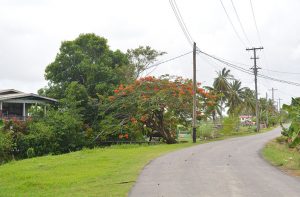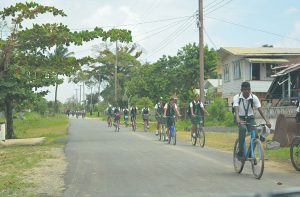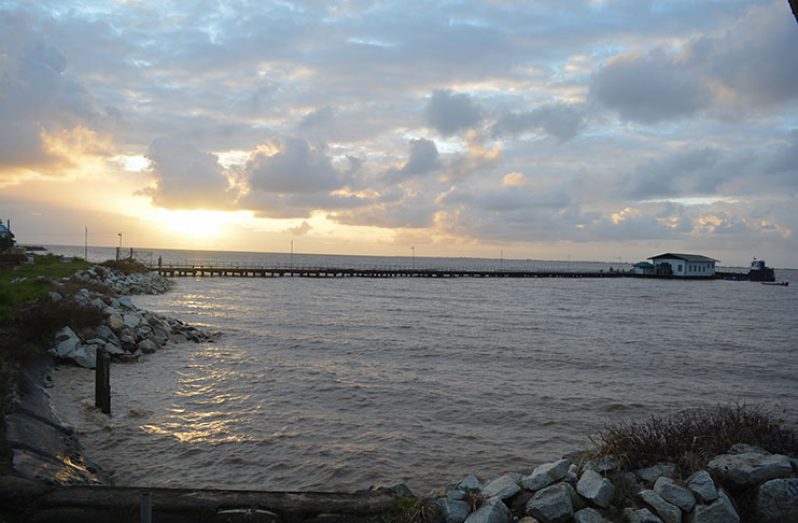LOCATED in the delta of the Essequibo River, Leguan is 18 square miles in size and is home to less than 3000 residents, the vast majority of whom are East Indians.
About 80 per cent of residents on the island, which was first occupied by the Dutch before Britain took over, are East Indians; 15 per cent are of African descent and the remainder are of mixed race.
According to the residents, the island about 30 years ago had a population of about 8000 with 36 villages, but due to heavy migration, some villages were abandoned and only 27 remain today.

Leguan is primarily an agricultural island and was first utilised by the Dutch to cultivate cotton. When that industry declined, attention was turned to sugar which was eventually phased out on the island.
As sugar declined, rice became the dominant crop and even to this day, it remains the mainstay of economic activities on the sparsely populated island situated close to Wakenaam, another of the 365 islands in the Essequibo River.
Residents also engage in cattle-rearing, livestock and cash crops cultivation, as well as the hunting of iguanas which are in abundance on the island, to sustain their livelihoods.
They say from what they were told, when the Dutch first came to the island, they saw so many iguanas that they decided to name the island leguan.
The Dutch word when translated into English means “Land of the iguanas.” From then to now, the iguanas are still in abundance on the island and can even be found on road shoulders, some as long at five feet.
Elderly residents related that in the 1980s, the migration began and continued even today. It was fuelled by lack of economic opportunities and development and limited education opportunities.
Students on the island have access to nursery, primary and secondary education, but they have to leave their abode if they want to pursue studies at the tertiary level.
Lack of job opportunities aside from farming has also seen many young people leaving the island in droves to pursue opportunities in Georgetown, other parts of Guyana, the Caribbean and farther afield.
Those who have migrated took up residence in other parts of Guyana, while others settled mostly in the Caribbean, the U.S., Canada and the UK.
NEW ROAD
Last year, asphalted roads, covering a distance of about eight miles were constructed in the Region Three island for the first time, much to the relief of residents there.

They related that prior to the new road, the crush-and-run road network was in a deplorable state, recalling that oftentimes tractors and trailers used to get stuck in the huge potholes which look like ponds when it rains.
With a new road built to the tune of millions of dollars at their disposal, taxi drivers can now move around without much fear of wear and tear on their vehicles, schoolchildren can ride confortably to school on their bicycles and farmers can now easily transport their produce to the Enterprise stelling.
Leguan is one of the very unique places in Guyana when it comes to security. Thefts and robberies are practically non-existent on the island and many residents sleep with the doors of their homes open.
According to some residents, the only “little offence” that is committed is when a sheep or goat happens to be close to a filled rum shop amid a drink and a gaff in full swing.

“It is goat or mutton curry for the boys. It is an understandable thing, no big offence. That is how we celebrate down here,” one resident told the Guyana Chronicle as he noted the easy going life on their island, which seldom has reports of domestic violence and other social ills.
At about 05:00 hrs, residents on the island are in their farms, working until 09:00 hrs before returning home for a rest. At 15:00 hrs they return to the field and work until 18:00hrs. During the downtime, farmers usually meet to socialise under a big tree or in a nearby bar.
Leguan has a rich colonial history, but all the historical buildings on the island have been consumed by the elements, except the St. Peter’s Anglican Church which is in need of urgent repairs. Along the beaches and foreshore of the islands, Dutch bottles, seals, coins and other artifacts can be found.
Leguan has a police station, a cottage hospital, nursery, primary and secondary schools, a magistrates court, a guesthouse, a plantain chip factory, rice mills and religious places of worship.

There, African and Indians coexist in harmony and Muslims, Hindus and Christian leaders regularly speak in each other’s places of worship.




.png)









